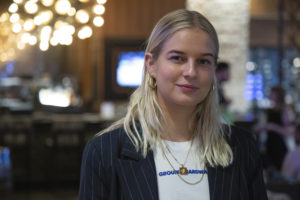Interview with Director Sandra Winther of “Lowland Kids”
Written by: Christopher Llewellyn Reed | August 25th, 2019
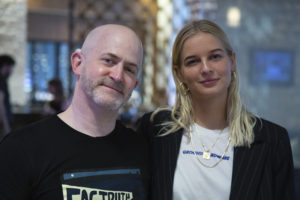
I met with director Sandra Winther at the 2019 SXSW Film Festival to discuss her short documentary Lowland Kids. Though only 22 minutes long, the movie offers a moving portrait of a family living on Louisiana’s Isle de Jean Charles, which is rapidly disappearing into the sea. While a government-run relocation program is in progress, the remaining residents enjoy their waning time on the island, on which many of them have a long history. Our protagonists are teen siblings Juliette and Howard Brunet, whose parents died from drug overdoes when they were quite young. They’re now fostered by their uncle Chris, a kind, wheelchair-bound mentor, with help from Chris’ friend Mike, who takes them out on his boat and acts as an additional role model. Beautifully shot, Lowland Kids is a lovely elegy to a fading way of life, as well as a testament to the resilience of the human spirit. It’s also a cautionary tale about the very real, devastating effects of climate change. Here is a condensed digest of our conversation, edited for length and clarity.
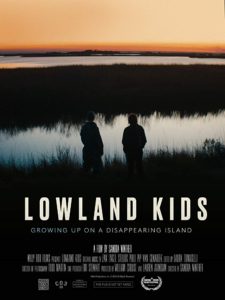
Christopher Llewellyn Reed: Though you are from Denmark, you are now New York-based. How did you find about your subjects on Isle de Jean Charles.
Sandra Winther: So, actually the producer of the film, William [Crouse], came to me after he had visited the island. He’d been reading articles about resettling America’s first climate refugees. That’s a big deal. It had been in the news for a while and he was interested in it. He knew the guys behind Beasts of the Southern Wild, which was filmed on the island. So, he just went down there out of interest. Then he came back to New York and he said, “Hey Sandra, there’s this island there. I think there might be a really great story. What do you think?,” and right away I was very interested in the subject, but at the time we didn’t really have the subjects yet. I felt like, “Oh, there’s something missing here. We need to really find the family or the people that this is about.”I always find myself being drawn to youth and I did my own research and found this old video that had Howard and Juliette in it. I’m not sure if it was a CNN video or what it was.
We had a local fixer, Mike, who’s also in our film, who’s very close with the family. He became our Isle de Jean Charles guide. He knows everyone down there. He worked on Beasts of the Southern Wild, as well, and we got on the phone with him and I said, “Mike, who are these two kids?” and he said, “Oh, that’s Howard and Juliette. You can definitely meet them when you come down here but I can’t speak for them, I can’t guarantee that they’re going to be able to spend all this time with you guys. They’re very used to journalists coming and knocking on their door, wanting an interview and things like that, but you should definitely meet them.”Then we scheduled our first trip down to Isle de Jean Charles and went down with a DP [Director of Photography] and sound recordists and just William and I and a small crew and we just knocked on their door and said hello and it definitely took the kids a while to … it took a while to gain their trust. We would just keep coming back to the house, and we were interviewing other families and people as well, but there was just something very, very special about that family. When we were down there, I just really felt like this is where the story is at.
We did an interview with Chris on our first visit to the house, and out of the corner of my eye, I see Juliette coming down and I didn’t even know what she looked like now, since I’d only seen these older videos of her. She came down the stairs with her cell phone and her little sassy walk. (laughs) I look out the corner of my eye and I’m just like, “That’s who I want to talk to. I really want to talk to her.” Then after we finished the interview, I asked her like, “Hey, if I come by a little later, would you guys be down to hang out?” She’s like, “I don’t know. I don’t know if we’re going to be here, we might, we might not.” (laughs) Just being such a teenager, but then, over the next few days we just kept coming back to the house, spending more and more time with her and Howard and Chris and yes, they started slowly letting us into the house and opening up, so that’s pretty great.
CLR: So, about how long have they lived with Chris? When did their parents die?
SW: That happened when Juliette was 3 and Howard was 5, so they were very little. They’ve lived with their uncle Chris since then, basically.
CLR: How old are they in your movie?
SW: Juliette is 15, Howard 17.
CLR: Got it. So, I really liked the film …
SW: Thank you.
CLR: … but I wanted it to be longer; I wanted to know more about their stories. Are you adapting this into a feature or are you making a feature of which this might be one component? Because the plight of climate-change refugees is a hugely important topic, which specificity in storytelling, as you have here, can help make more accessible. So what are your plans after this, either with these people or on the same topic?
SW: So, we’re trying to figure out what the feature would be, right? In my mind, the feature would be to spend the next few years with them, until the relocation actually happens. There are a lot of other interesting families that are going through this exact same situation. You actually have families that are in halfway homes or temporary housing, because they already moved off the island, but the new site isn’t ready for them yet. So there’s definitely the opportunity there to build it into even a larger story, and I feel like the Brunets are just such a special family, and seeing those kids grow up and the transformation that would happen over the next four years following them, I think it’d be really special.So that’s definitely one thing that we’re working on, which would be like “Lowland Kids: The Feature.”
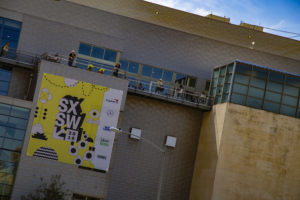
Now, another project that we’re also working on, or in talks about, would be an episodic series, like a doc series telling the stories of families that are going through a similar situation across the world and sort of weaving those stories together, seeing how the tribes that used to live in these parts of the world are different. Seeing how the youth is now … how a kid in Australia, where the reefs are dying, deals with climate change vs. a girl in Venice vs. Howard and Juliette on Isle de Jean Charles. I think there’s something really interesting there, telling the story through the eyes of the youth because there is such a, I don’t know, to me there’s just such a beautiful optimism that kids have that I think is a really nice breath of fresh air in this whole climate-change conversation, if that makes sense.
CLR: Sure, and I think Venice, obviously, is a place that would make sense, as would your neighboring Netherlands, although since their very existence is threatened by climate change, I understand they’ve taken some significant steps to block the sea, and we’ll see how good those are. Your native Denmark is also surrounded by ocean and has quite a lot of islands. How are the Danish handling the possible threats of climate change?
SW: I think Denmark has always been at the forefront when it comes to not having a large footprint on the environment. I mean it’s something, even for me just growing up, that’s been second nature, in a way. I think that’s actually something that’s been very hard for me moving to the U.S., seeing how people aren’t as thoughtful about these things.
CLR: And, in fact, some deny it is even happening. We have climate-change deniers!
SW: (laughs) Yes, I don’t think we have a lot of those in Denmark. But yes, so much of our energy is from windmills. You’ll see families riding bikes, they don’t even own a car. Right? Those are things that I grew up with. Recycling. It’s like all these things are just so ingrained in Danish people and at the forefront of our politics, so it’s really just always been with us. I think it’s also one of the reasons why the story connected with me in a way, because I feel a responsibility to tell this story. I think I grew up having everything that I needed. I grew up in a country where there was a lot, a huge support system where there’s an understanding of climate change, where there’s real action that’s being taken.Then when this story came to me, I felt like, “Wow, I should really tell the story.”
What’s also interesting about Isle de Jean Charles is they’re the first, right? No other community has ever been relocated. They’re like the test rabbits of something that’s hugely complex and something that will be happening across the world. I mean, you could argue that Puerto Ricans are actually the first climate refugees. So many people have fled that island, left the island, following Hurricane Maria, but there’s something really interesting about the residents of Isle de Jean Charles being the first official climate refugees and knowing that this is only, max, like 200 families that are being moved. Now there are going to be communities that are so much bigger than that, where you’re going to have to take the same action. The Isle de Jean Charles relocation costs, like, $48 million. How is it going to be possible to move people from Miami, Florida, if that were the case?
CLR: Well it’s just around the corner, as Miami gets flooded routinely. It’s a very good question and we’ll see if the deniers remain in charge, because that doesn’t bode well for any of us. So, how did you assemble your team? Your cinematographer, Todd Martin, really did such a wonderful job and your editor, Laura Tomaselli, as well.
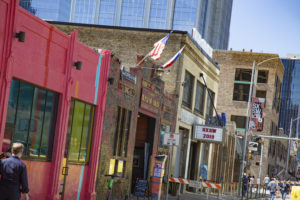
SW: Well, I was very fortunate to have William Crouse and Lauren Avinoam, our two producers. Todd Martin has been a frequent collaborator of mine for a while. He is incredible. I mean, without him, we couldn’t have brought the beauty of the island out. He’s such a big part of it. I remember when we were planning the first scout and William said, “Well, why don’t we just go down, the two of us?” and I said, “Well no, I think we should go down with a DP.” and then that turned into, “Hey, I want to shoot on an Alexa and these anamorphic lenses,” and before we knew it, we were just doing this whole shoot. Because I was like, “If we’re capturing anything, I really want it to be beautiful. I want it to be cinematic.” Because I think it’s a huge part of why an audience can connect with what they’re seeing. It’s just, bringing out that richness and that texture is always really important to me in my work.
So, Todd was down and he was also able to Steadi-op, which also creates these beautiful long takes that are in the film because he’s able to go from Easyrig to Steadicam, which is also very unique for a DP. So I can’t thank him enough. I mean, he’s just so incredible and has such an incredible eye. He can almost tell that a moment’s going to happen before it happens. We work very well together because of that. We have a very similar thinking and mindset.
CLR: And the drone shots are really beautiful, as well. Did he operate those?
SW: Yes, he was able to do that, too. That was important. That was really a thing I felt like you need to see from that perspective.
CLR: You need to see that little strip of causeway surrounded by water to get a sense of how fragile Isle de Jean Charles is, yes.
SW: Exactly! And then Laura Tomaselli, our editor, was just so incredible. Especially for documentaries, there’s so much of it that gets crafted in the edit, right? You have so many options. Before this project, and when we started working together, I just felt like, “Wow, we really want the same thing. We’re connecting with the same sound bites.” We started pairing Juliette’s sound bites about her mother with Mike and her on the boat and making these creative choices together and the way she was able to bring that to life was just so beautiful to watch. If she just got a little bit of time, a few days to sit there and craft something, what came back was really special and she just poured herself into it. I feel like everyone on this project has just poured themselves into it because they believed in the project so much and they were very moved by the story.
CLR: Speaking of time, how long did it take from start to finish?
SW: We had our first shoot in January of 2018, then our second shoot in May. So on our first shoot, we shot for about three days and then our second shoot we shot for about nine days and then we started editing. Then we finished the film right before SXSW. I mean, we were tweaking the edit up until three weeks ago, and then we had already had a color pass done, but then we did final color, sound-design mix and made it just at the deadline. That’s when the film was finished.
CLR: Well, congratulations on it. It’s beautiful and I hope all good things happen with it and you make a feature or a series.
SW: Thank you so much.
